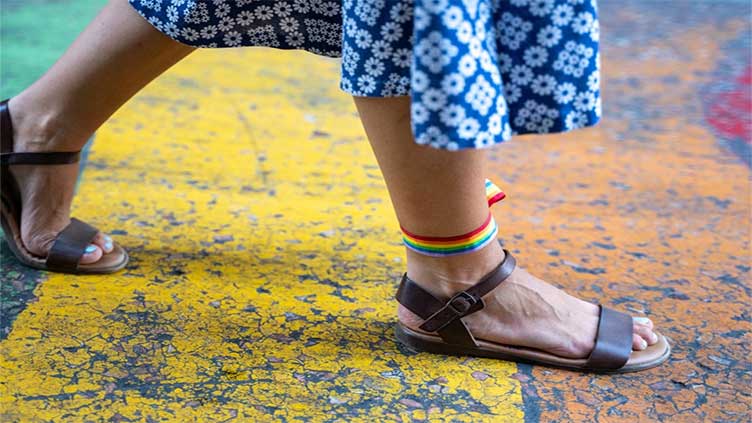Walking 100 steps backwards is 'as good for you as 1,000 forwards

Not only could it burn more calories, but improve your memory
(Web Desk) – We have all heard that walking can be great for your health.
But the aim of 10,000 steps a day can seem a little steep for some - and hard to fit in between busy workdays or childcare.
What if you could make the steps you take count more? All you need to do is change their direction, according to Dr Michael Mosley.
The TV doctor and host of the podcast Just One Thing said walking backwards instead of forwards for just a few minutes can have some surprising health benefits.
"If you could see me now, it would look it a bit strange," he told listeners in the most recent episode of his podcast.
Dr Mosley said he swears by the "weird" practice - also called 'retro-walking' - to help with the "twinges" he gets in his lower back and knees.
"This is a technique that's been used in physiotherapy for decades to rehabilitate lower leg injuries", the TV doc explained.
"It can improve your gait and mobility and there are a surprising amount of good scientific studies which how that walking backwards can sharpen your memory and problem solving skills."
But the diet guru said use of this method goes back much farther than you might think.
He called walking backwards "a very ancient practice", which is "thought to have originated in China, where it remains popular to this day".
Dr Mosley went on: "In fact the Chinese have a saying that '100 steps backwards are worth 1,000 steps forward'."
1. It burns more calories
According to the diet guru, ambling backwards takes more energy - about 30 per cent, according to studies - so it helps your body burn a few more calories than going forwards.
He referred a study in the International Journal of Sports Medicine, which found that healthy volunteers lost 2.5 per cent of their body fat by adding retro-walking to their exercise plan.
"Backwards walking uses muscles that are less active during forward walking, such as your calves and shins as well as your quadriceps, that large muscle at the front of your thigh," Dr Mosley said.
2. It boosts short-term memory
Reverse walking can also boost your short term memory, the TV doctor said.
Researchers from the University of Roehampton tested people's memory of a video after asking the to walk backwards, forwards or stand still and found that retro-walkers "consistently remembered more about the video than the others", Dr Mosley went on.
"Walking backwards activates different parts of the brain than walking forwards," he explained, helping "mobilise your brain's resources".
That includes the prefrontal cortex - which is involved in planning, decision making and memory.
3. It reduces back pain and improves balance
Professor Janet Dufek from the University of Nevada, Las Vegas, a guest on the podcast, said one of the main benefits of backward walking is "different use of major muscle groups", which can help with back pain and flexibility.
The muscles on the back of your legs - the hamstrings - stretch when you backward walk, she told Dr Mosley.
"Having that stretch allows for greater range of motion and therefore reduced the stress on the back," Dr Dufek explained.
A small study of athletes she lead found that 80 per cent of them were able to ease back pain with retro-walking, she said.
She added that the practice can also help "improve stability and balance".
Dr Dufek found that elderly people who walked for 15 minutes five days a week, for four weeks, were able to improve their balance.
Why not try it yourself? Hop on a treadmill at your local gym if there's a rail to hold on to or attempt waking backwards in your home or outside with "care and a clear path", Dr Mosley suggested.



